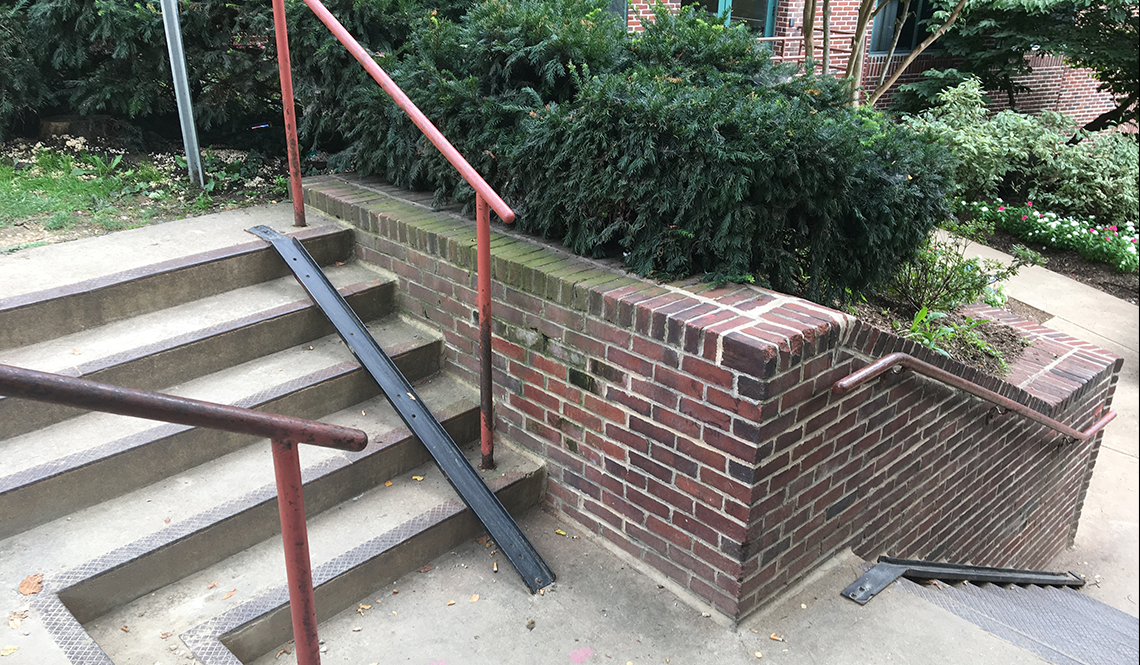
Street level solutions for safer bicycling
- Select a language for the TTS:
- UK English Female
- UK English Male
- US English Female
- US English Male
- Australian Female
- Australian Male
- Language selected: (auto detect) - EN
Play all audios:

5. PROTECTED BIKE LANES Even if a street wasn't designed to include a bicycle lane, there's a good chance — because so many roadways have multiple lanes going each way — that the
street is wide enough to include a safe lane for cycling. One of the safest and cheapest ways to create a protected bicycle lane involves using little more than paint and parked cars. A
main avenue in downtown Phoenix, Arizona, makes parked cars useful as buffers between bikes and traffic. Photo Melissa Stanton 6. BICYCLE REPAIR KIOSKS Installed in 2016 by the Washington,
D.C., Department of General Services, the bicycle repair stations help ensure, says the office, that "District riders have access to all the tools needed to make their rides
trouble-free." The bike stations are equipped with an air pump and eight retractable tools, including tire levers, a wrench, bicycle headset, hex set, Torx (or star) screw heads and
both Phillips- and flathead-screwdrivers. Self-service bicycle repair stations can be key to a bicyclist completing a cycling trip rather than calling a car. Photo by Melissa Stanton 7.
CLIMBING BIKE LANE A climbing bike lane parallels the driving lane going uphill in order to provide space for bicyclists to ride without slowing motor vehicle traffic. "Climbing lanes
are beneficial because they allow for separation between modes to be maintained when the risk to the bicyclists is higher," says Fontaine Burruss, bikeshare coordinator for the city of
Raleigh, North Carolina, which has created such lanes on a handful of the hilly city's especially steep hills. Climbing lanes help keep uphill cyclists safe and out of the way so not
to slow vehicle traffic. Image from a Toole Design Group presentation 8. SHARROW LANES Shared lane markings, also known as sharrows, indicate to both drivers and bicyclists that a roadway
needs to be used by both. Another purpose is to help bicyclists position themselves so they can avoid swerving into oncoming traffic or being hit by the sudden opening of a parked car's
doors. While better than nothing, sharrows are not a substitution for dedicated, protected bike lanes, which are the best safety solution for streets that need to be shared by motorists,
cyclists and sidewalk-served pedestrians. Sharrows should only be used on roadways with speeds and spaces that make them truly sharable. Photo courtesy City of Raleigh, North Carolina 9.
BICYCLE PLAYGROUNDS (AKA: TRAFFIC GARDENS) A Danish-import, these small-scale, closed course streetscapes, complete with lane markings, signage, crosswalks, intersections, one-way roadways,
a roundabout and more are spaces where cyclists of all ages can learn the rules of the real roads and hone their skills in a safe, comfortable setting. (Learn more.) Cycling playgrounds
enable bicyclists of all ages to learn how to share streets with cars and pedestrians. Courtesy Cascade Bicycle Club _Compiled by Jay Walljasper, Melissa Stanton and Ellen Ryan. Article
published May 2018, updated February 2019_ MORE ABOUT BICYCLING
